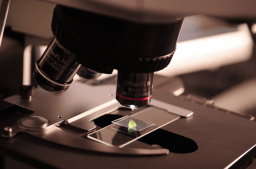Rare Disease Day
Rare Disease Day is observed next on Saturday, February 28th, 2026 (75 days from today).

Rare Diseases Day is observed worldwide, usually on or near the last day of February each year, to raise awareness among policymakers and the public about rare diseases and their impact on human life and patient's life. Each year, Rare Diseases Day is sponsored by NCATS and the NIH Clinical Center at the NIH as part of this global event. Rare Diseases Day at NIH aims to raise awareness about rare diseases, the people they affect, and NIH research collaborations are underway to address scientific challenges and improve new treatment.
The goals of Rare Disease Day at the NIH are:
- Fulfill the NIH's commitment to helping people with rare diseases through research.
- Research in rare diseases is prominently supported by the NIH and the development of diagnostic and therapeutic approaches.
- Make a win-win transition between public and private researchers, patients, patient’s advocates, and policy makers.
- Exchange information on the latest rare diseases with stakeholders to advance research and treatment efforts.
- Face rare diseases by sharing the stories of patients, their families, and their communities.
History of Rare Disease Day
Rare Diseases Day will organize a lot of discussions, patient stories, research updates, TED talks and a recent Nobel laureate presentation were recognized for her working on a gene editing tool.
The free virtual event runs from 10:30 a.m. to 5:30 p.m. EST, and organized to celebrate Rare Diseases Day, works to raise awareness about the approximately 7,000 known rare diseases and the hundreds of millions of people thought to be living with them. Visit this website to pre-register.
A rare disease is considered in the United States when it affects fewer than 200,000 residents at any given time.
In addition to promoting disease awareness, the NIH event seeks to expand knowledge of ongoing collaborative activities to address scientific challenges and advance new treatments. Besides, demonstrating the federal agency's commitment to using research and initiating dialogue among scientists, patients, and patient advocates and policy makers.
NIH also wants to share the faces of rare diseases and stories from patients and their families, who will also have the opportunity to “meet” the scientists and ask those questions.
Rare Diseases Day also take care of patient, healthcare providers, researchers, interns, students, industry representatives and government employees. However, the organizers stress that the event is also open to the public and all are encouraged to attend.
"It's been a day for science, for the community of rare disease, but there's something here that might interest anyone," said Anne Pariser, MD, director of the Office of Disease Research, rarity of the National Center for the Advancement of Translational Science (NCATS) at NIH, told BioNews, publisher of the website, in a phone interview.
“Some are about how research is done in general. There are principles that can translate into any disease,” she added. “We encourage everyone to participate”.
The show begins with an overview of the NIH and features of a rare disease by Jacob Thompson, a rare disease patient, campaigner, artist, author, and inspirational speaker. It also includes a panel discussion on industry partnerships and patient advocacy programs.
EURORDIS sponsored Europe's first Rare Disease Day on February 29, 2008. A year later, the United States with 23 other countries joined the first global event. Visit Rare Disease Day for more information.
Each year, the slogan for the NIH event is “Patients & Researchers - Lifetime Partners” which is fully suitable with the NCATS philosophy that researchers and patients, families, caregivers, and advocacy groups must be closely aligned to maximize their chances of success in promoting research about rare disease. It is also fit with the NCATS Patient-Focused Therapies Development Toolkit, Rare Disease Clinical Research Network, Therapeutics for Rare and Neglected Diseases program, Rare Diseases Registry Program (RaDaR) and the Genetic and Rare Disease Information Center.
NCATS and Rare Diseases Research
About 7,000 rare diseases affect humans, of which only a few hundred have a cure. Although there are about 200,000 Americans who are affected by each rare disease, these diseases affect an estimated 30 million people in the United States. Since rare diseases are often difficult to diagnose, it can take years to get an accurate diagnosis. Even after an accurate diagnosis, treatment is often unavailable, as only about 5% of rare diseases have FDA-approved treatments.
As a result, rare diseases are devastating and economically impacting patients, their families and the nation. at large. Most rare diseases are serious or life-threatening, chronic and progressive disorders that place a medical and financial burden on patients and their families.
Through an effort to enhance science, NCATS supports and approaches to the study of rare diseases. The NCATS Office of Rare Disease Research (ORDR) gives a chance to participate in NIH-wide activities related to the study of a wide range of rare diseases. These efforts have the potential to speed the development of treatments for many rare diseases and ultimately help more patients more quickly. Learn more about the ORDR and NCATS rare disease research programs and access shareable resources to help raise awareness about rare diseases.
Observed
Rare Disease Day has been observed the last day of February.Dates
Thursday, February 29th, 2024
Friday, February 28th, 2025
Saturday, February 28th, 2026
Sunday, February 28th, 2027
Tuesday, February 29th, 2028
Founded by
EURORDIS in 2008


